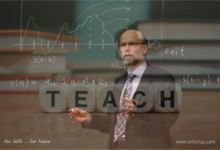
Prepare For A Changing World With Best Future Foresight Techniques
Our technologies, jobs, organizations, and even some of our values and ways of thinking are all changing radically, making it very difficult to plan and prepare for future challenges and opportunities. In fact, in this age of massive and accelerating change, many people have no idea what kind of future world they should prepare for. And they may compulsively decide that they cannot know or do anything about their future. The relationship of foresight to success appears, which needs an in-depth look to understand it well. As a result, we often think that people are successful because of luck, when in fact, it is their foresight skills that make them “lucky.” Foresight Techniques enabled them to take advantage of opportunities and avoid problems facing others.
Therefore, foresight is the secret ingredient to success because, without using foresight techniques, we cannot prepare for the future. Adequate foresight has always been critical in human life. But it is not easy to achieve now because our modern world is changing faster than ever before.
Foresight technology growth
We can learn more about what will happen by looking systematically at what is happening now through the present and the future. The main thing to watch is not daily sudden events or developments but ongoing long-term trends and transformations, for example, the increasing and changing population, land use, technology, and government systems.
Developing scenarios is an advantageous and meaningful way to think about the future. It reasonably describes events that may occur in the future. And it is not a prediction that determines what will happen in the future. Also, by using scenarios, we can think seriously about what we should do next.
There are many of the best-known foresight techniques and a variety of new ways of thinking about the future. Using these technologies and many more, we can predict or know many things that may happen in the future:
1) Scan
The ongoing efforts to identify significant changes in the world outside a survey organization or group rely on a systematic survey of current newspapers, magazines, websites, and other media to indicate changes that are likely to have future significance. The survey focuses primarily on trends and changes over time rather than events.
2) Analyze and monitor trends
Trends are significant in a particular community, industry, or sector that can be carefully monitored and reported regularly to key decision-makers. They are monitored and examined to determine their nature, causes, speed of development, and potential impacts. Careful analysis may be required because trends can affect different aspects of human life, and many of these influences may not be apparent at first. For example, the emergence of a new epidemic or disease may significantly affect many different organizations and societies.
3) Scenario development and analysis
Scenarios are attempts to imagine and visualize future possibilities based on what we know or think. They help us understand what might happen due to a decision we might make. The future development of a trend, strategy, or event can also be like a story or outline. Usually, many scenarios develop so that decision-makers know that future events may invalidate any scenario they consider probable and used for planning purposes.
4) Consulting others
Other people, such as experts, can be consulted for their opinions on the future and give advice. For example, business managers and government leaders frequently use the consultation to understand future possibilities and make better decisions. And they also collect the data through face-to-face conversation, telephone interviews, and questionnaires sent by e-mail or regular mail.
5) Computer models and simulations or games
They are modeling complex systems such as major global economies by using mathematical equations to be fed into a computer. They are then entering the data to express the state and state of the economy. Note that the model is a static representation of something, but it has a dynamic twin, which is the simulation. For example, commanders of the armed forces simulate battles when they move models of military vehicles, ships, and warplanes. Either on large maps or during “military maneuvers” that involve forces of nature, equipment, and even live ammunition. Also, in military exercises, real soldiers may become represented in a mock battle, which helps them understand the nature of actual combat. And helps commanders test alternative strategies and tactics they may use later.
6) Historical analysis
they are studying Historical events to anticipate the results of current developments. Then often, they compare the current issue to one or more seemingly historically similar problems. For example, many business and government leaders have relied heavily on what they have learned from history to guide them in making significant decisions.
7) Brainstorming
Generate new ideas using a small group to think creatively about a topic. Group members are motivated to build on each other’s ideas and continually critique. Note that brainstorming helps identify possibilities, opportunities, and risks. There are also different ways of generating ideas or solving problems. Such as idea mapping, impact analysis, and the systematic identification of all potential variables. The use of brainstorming helps expand minds beyond the present and promotes continuous innovation and long-term strategy development.
8) Vision
Because the future is more than just a prediction, the best leaders and future managers have a long-term vision. And understand where they want their organizations or teams to be in the future, as these insights lead them to success. These leaders usually start by seeing past events and the current situation. They then envision the desired future and then identify specific ways to move toward it. The vision procedure often paves the way for more formal goal setting and planning. Those insights drive the success of an organization or team. The lack of realization of the vision can also lead to less success, perhaps failure, and perhaps not achieving the dream ultimately.
Foresight results from creating the structure that will enable everyone to explore the future. As well as understanding how to make the strategic changes that the vision of future leaders will need if they are to achieve them. It’s about acquiring and using foresight techniques and skills that allow the organization, team, and leader to think and plan beyond today to achieve that future vision that everyone now shares.



